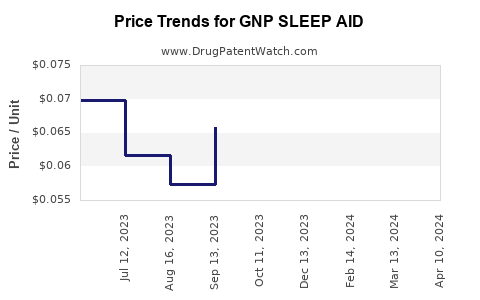Drug Price Trends for GNP SLEEP AID
✉ Email this page to a colleague

Average Pharmacy Cost for GNP SLEEP AID
| Drug Name | NDC | Price/Unit ($) | Unit | Date |
|---|---|---|---|---|
| GNP SLEEP AID 25 MG CAPLET | 46122-0651-78 | 0.05484 | EACH | 2024-11-20 |
| GNP SLEEP AID 25 MG TABLET | 46122-0763-51 | 0.10673 | EACH | 2024-11-20 |
| GNP SLEEP AID 25 MG CAPLET | 46122-0651-62 | 0.05484 | EACH | 2024-11-20 |
| GNP SLEEP AID 50 MG/30 ML LIQ | 46122-0754-29 | 0.00836 | ML | 2024-11-20 |
| GNP SLEEP AID 25 MG CAPLET | 46122-0651-62 | 0.06085 | EACH | 2024-10-23 |
| GNP SLEEP AID 25 MG TABLET | 46122-0763-51 | 0.11345 | EACH | 2024-10-23 |
| >Drug Name | >NDC | >Price/Unit ($) | >Unit | >Date |


